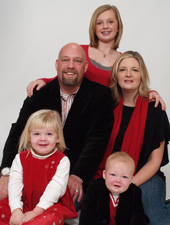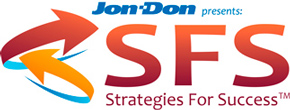We are making progress in building our business plan with Paul Landes, our local business consultant. This business is about so much more than truck mounts, equipment and cleaning chemicals. (I’ve always known this but still …)
Yesterday was our fourth weekly meeting with Paul. So far we have been doing activities for Paul helping him and us both to get to know our business better. We are also analyzing our business as a whole. We aren’t going to have our written business plan in place until we have a very clear picture of where we are (and that includes in comparison to our competition).
 To date John and I have reviewed why we are in this business to begin with? Why did we start and why do we continue? What is our purpose? And guess what, it’s NOT to give people clean carpets … but once again we knew that already!
To date John and I have reviewed why we are in this business to begin with? Why did we start and why do we continue? What is our purpose? And guess what, it’s NOT to give people clean carpets … but once again we knew that already!
We have also examined any significant changes that have occurred in the lifespan of the business. What prompted them, how did we feel about and handle the changes (did we roll with it or was it painful?). We also identified changes in customer behaviors and buying patterns and tried to project what changes we think will be happening over the next three years.
You know, Meg, I think many of your readers would be interested in hearing what Paul, John and you come up with. There is no doubt that big changes are afoot in the buying psyche of the American public. In fact, I just turned in a two part series for ICS magazine on how to work with the new price-conscious, in-your-face “haggling” Value Shopper. Steve
Next we did a competitive analysis. We identified our direct competitors, their strengths and their weaknesses along with ours. When I was a corporate trainer we encouraged our sites to analyze themselves by asking three questions.
1. What am I doing well?
2. What can I be doing better?
2. What/How can I learn more?
This activity Paul suggested reminded me of that. It let us see what we are doing well so that we can continue it. It probed us to identify what we could be doing better (and this doesn’t have to be a weakness, but just something, anything we can improve upon, no matter how small. Incremental improvements count!) The third part is figuring out what we need to learn to be able to do better? (Attend SFS again, learn about new services and add them, get more IICRC certifications, take a class on Quickbooks, research software that can streamline our schedule and invoicing).
Last week we took a task that both John and I do and developed a work flow chart. This was done to get us to think about our systems and procedures (that are currently in each of our heads) and go through the task of getting it on paper so that we can have documentation which will be used to train others.
Meg, in SFS we call this very challenging flow-charting an “in the journey is the reward” task! Lot’s of work but at the end of it you will find some very obvious answers that may have eluded you for years.
I know a lot of this is done for us already in the 600 page plus Operations Manual we received at the Strategies for Success seminar, but we don’t do everything the same way as others so we need to create a procedure manual specific to Burdick’s Cleaning.
We are also creating the job description for the lead technician position we need to hire for soon. Again, we relied heavily on the information in the SFS manual to help us do this, with a few tweaks to tailor it to Burdick’s Cleaning. (It sure is nice to not have to re-invent the wheel by having SFS resources to refer to).
 Yesterday we developed our organizational chart. Seeing as right now it’s just John and I, it wasn’t all that big of a chart! We listed the tasks that each of us does. We then began working on our 3 year plan. We are taking 2010, 2011 and 2012 and identifying the achievements necessary for each year in the areas of 1) volume of business, 2) strategic changes (add new business segments), 3) geographic area serviced, 4) facilities changes, 5) cleaning equipment needed, 6) staff changes (including key staff positions needed and other staff needed) and finally 7) what should the owner’s role be?
Yesterday we developed our organizational chart. Seeing as right now it’s just John and I, it wasn’t all that big of a chart! We listed the tasks that each of us does. We then began working on our 3 year plan. We are taking 2010, 2011 and 2012 and identifying the achievements necessary for each year in the areas of 1) volume of business, 2) strategic changes (add new business segments), 3) geographic area serviced, 4) facilities changes, 5) cleaning equipment needed, 6) staff changes (including key staff positions needed and other staff needed) and finally 7) what should the owner’s role be?
In other words, what needs to be done each year to achieve the goals we have already set. Armed with this information, we are going back to the organizational chart to see what tasks John and I would still be in charge of and who we will need to add to our organizational chart so that we can achieve the goals on our Three Year Plan.
Wow, Meg, you two have been busy! Keep us posted on your progress as many inquiring minds want to know! Steve
